
Cecil Blount DeMille was an American filmmaker and actor. Between 1914 and 1958, he made 70 features, both silent and sound films. He is acknowledged as a founding father of American cinema and the most commercially successful producer-director in film history. His films were distinguished by their epic scale and by his cinematic showmanship. His silent films included social dramas, comedies, Westerns, farces, morality plays, and historical pageants. He was an active Freemason and member of Prince of Orange Lodge #16 in New York City.

Alice Geraldine Farrar was an American lyric soprano who could also sing dramatic roles. She was noted for her beauty, acting ability, and "the intimate timbre of her voice." In the 1910s, she also found success as an actress in silent films. She had a large following among young women, who were nicknamed "Gerry-flappers".

Samson and Delilah is a 1949 American romantic biblical drama film produced and directed by Cecil B. DeMille and released by Paramount Pictures. It depicts the biblical story of Samson, a strongman whose secret lies in his uncut hair, and his love for Delilah, the woman who seduces him, discovers his secret, and then betrays him to the Philistines. It stars Victor Mature and Hedy Lamarr in the title roles, George Sanders as the Saran, Angela Lansbury as Semadar, and Henry Wilcoxon as Prince Ahtur.

Étienne de Vignolles, Sieur de Montmorillon, Chatelain de Longueville, also known as La Hire, was a French military commander during the Hundred Years' War.
Joan of Arc was a French woman who is known for her role in the Hundred Years' War and as a religious figure, also called The Maid
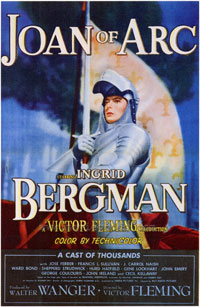
Joan of Arc is a 1948 American hagiographic epic film directed by Victor Fleming, and starring Ingrid Bergman as the eponymous French religious icon and war heroine. It was produced by Walter Wanger and is based on Maxwell Anderson's successful Broadway play Joan of Lorraine, which also starred Bergman, and was adapted for the screen by Anderson himself, in collaboration with Andrew Solt. It is the only film of an Anderson play for which the author wrote the film script. It is the last film Fleming directed before his death in 1949.
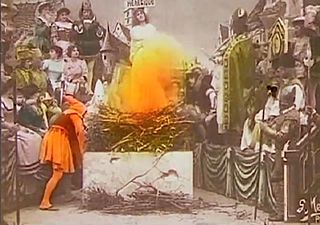
Joan of Arc is a 1900 French silent film directed by Georges Méliès, based on the life of Joan of Arc.
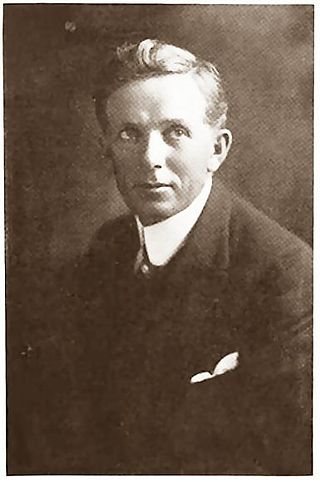
George H. Melford was an American stage and film actor and director. Often taken for granted as a director today, the stalwart Melford's name by the 1920s was, like Cecil B. DeMille's, appearing in big bold letters above the title of his films.

Anita King was an American stunt driver, actress, and thoroughbred racehorse owner. In 1915, she became the first woman to drive a car unaccompanied across the United States, with her 49-day journey from Hollywood to New York City.
The Handschiegl color process produced motion picture film prints with color artificially added to selected areas of the image. Aniline dyes were applied to a black-and-white print using gelatin imbibition matrices.

Joan of Arc has inspired artistic and cultural works for nearly six centuries. The following lists cover various media to include items of historic interest, enduring works of high art, and recent representations in popular culture. The entries represent portrayals that a reader has a reasonable chance of encountering rather than a complete catalog. Lesser known works, particularly from early periods, are not included. In this article, many of the excluded items are derivative of better known representations. For instance, Friedrich Schiller's 1801 play The Maid of Orleans inspired at least 82 different dramatic works during the nineteenth century, and Verdi's and Tchaikovsky's operatic adaptations are still recorded and performed. Most of the others survive only in research libraries. As another example, in 1894, Émile Huet listed over 400 plays and musical works about Joan of Arc. Despite a great deal of scholarly interest in Joan of Arc, no complete list of artistic works about her exists, although a 1989 doctoral dissertation did identify all relevant films including ones for which no copy survives.

Julia Faye Maloney, known professionally as Julia Faye, was an American actress of silent and sound films. She was known for her appearances in more than 30 Cecil B. DeMille productions. Her various roles ranged from maids and ingénues to vamps and queens.
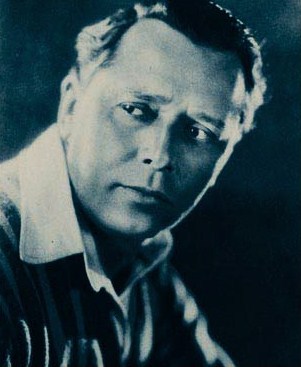
Theodore Kosloff was a Russian-born ballet dancer, choreographer, and film and stage actor. He was occasionally credited as Theodor Kosloff.

Abbie Jean MacPherson was an American silent actress, writer and director. She is known for her collaborations with directors D. W. Griffith and Cecil B. DeMille, and was a founding member of the Academy of Motion Picture Arts and Sciences.
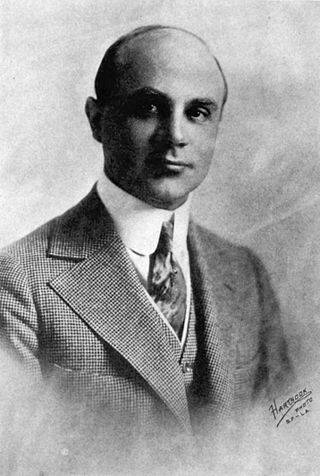
Oscar C. Apfel was an American film actor, director, screenwriter, and producer. He appeared in more than 160 films between 1913 and 1939, and also directed 94 films between 1911 and 1927.

The Captive is an American silent-era film released on April 22, 1915. It was released on five reels. The film was written, directed, edited, and produced by Cecil B. DeMille. Jesse L. Lasky was another producer and Jeanie MacPherson worked with DeMille to write the screenplay. The film is based on a play written by Cecil B. DeMille and Jeanie MacPherson. The Captive grossed over $56,000 on a budget of $12,154. Blanche Sweet stars as Sonia Martinovich, alongside House Peters who stars as Mahmud Hassan. The film details the romantic war-era plight of Sonia and her lover Mahmud.
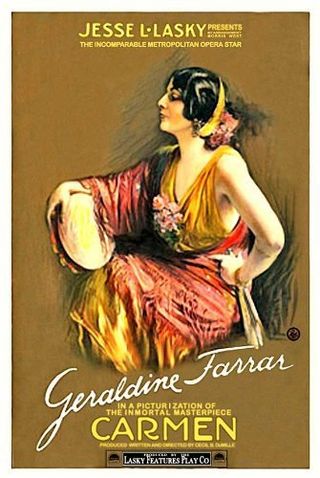
Carmen is a 1915 American silent drama film directed by Cecil B. DeMille. The film is based on the novella Carmen by Prosper Mérimée. The existing versions of this film appear to be from the re-edited 1918 re-release.

Temptation is a 1915 American silent romantic drama film directed and produced by Cecil B. DeMille. The film starred Geraldine Farrar and Theodore Roberts and was written by and based on an original story by Hector Turnbull. Additional writing was done by DeMille and Jeanie MacPherson, who did not receive screen credit.

The Woman God Forgot is a 1917 American silent romance film directed by Cecil B. DeMille and starring Geraldine Farrar. Art direction for the film was done by Wilfred Buckland.

The Devil-Stone is a 1917 American silent romance film directed by Cecil B. DeMille, co-written by his mother Beatrice deMille and Jeanie MacPherson, and starring Geraldine Farrar.




















